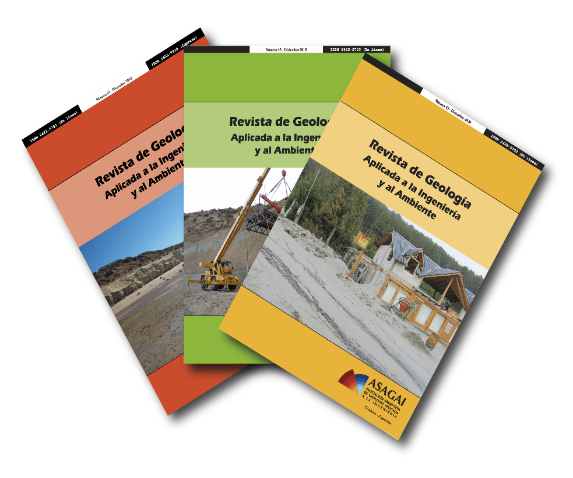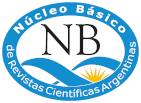The Freshwater – saltwater zone dynamics in the sandune barrier, Buenos Aires. Study case: Pinamar
Abstract
DOI:
https://doi.org/10.59069/24225703ee016Keywords:
coastal aquifers, electrical conductivity, tideAbstract
The study of the freshwater-saltwater interface zone (FWSWI) is fundamental for the characterization of coastal aquifers and the evolution of freshwater reserves. In this work we study the factors that condition the dynamics of the IADAS in the locality of Pinamar. To carry out this task, a monitoring borehole was drilled on the coastal front, electrical conductivity (EC) profiling was performed, and continuous pressure, temperature and salinity sensors were installed. Information was collected from the tide gauge located in the town of Santa Teresita, while hydrometeorological data were obtained from a station located in the town of Pinamar. A correlation between high tide events and salinity, water level and temperature values were verified. The response times between the rise of the tide and the increase of the salinity are less than 8 hours, while the interval required to reach equilibrium again takes at least 2 days. Temperature variations are influenced by the prevailing climatic conditions at the time of the rising tide. The analysis of the relationship between storage variation and high tide events allows inferring that, when recharge events occur, there is a greater stability due to the increase of the hydraulic load on the IADAS. The study of IADAS behavior is an effective indicator for resource management.
References
Carretero, S., Rapaglia, J., Rodrigues Capítulo, L., y Kruse, E. (2019). Variability of 222Rn in the sandy aquifer of Buenos Aires coast. Environmental Earth Sciences, 80 (3): 1-14.
Carretero, S. C., Capítulo, L. R., Dapeña, C., Fabiano, M., & Kruse, E. (2022). A chemical and isotopic approach to investigate groundwater dynamics in a coastal aquifer. Catena, 213, 106229.
Consejo Federal de Inversiones. (1993). Estado Actual de las Fuentes Subterráneas en Pinamar y Villa Gesell. Primera Etapa: Pinamar.
González N. (2005). Los ambientes hidrogeológicos de la Provincia de Buenos Aires. Geología y Recursos Minerales de la Provincia de Buenos Aires. XVI Congreso Geológico Argentino, Cap. XXII: 359 - 374.
Kruse E. y Mas-Plá, J. (2009). Procesos hidrogeológicos y calidad del agua en acuíferos litorales. En Mas-Pla, J., & Zuppi, G. M. (Eds), Gestión ambiental integrada de áreas costeras; p:29-53. España: Rubes Editorial.
Parker G. y Violante R. A. (1989). Geología y Geomorfología. Regiones I y II. Punta Rasa - Faro Querandí. Provincia de Buenos Aires. Convenio Consejo Federal de Inversiones y Servicio de Hidrografía Naval, Informe final. 141 pp.
Perdomo S., Rodrigues Capítulo L., Kruse E. E. y Ainchil, J. E. (2013). Aplicación de tomografías eléctricas en la configuración del acuífero costero en un sector oriental de la Provincia de Buenos Aires. VIII Congreso Argentino de Hidrogeología y VI Seminario Latinoamericano sobre Termas Actuales de la Hidrología Subterránea, p: 57-62.
Rodrigues Capítulo, L. (2015). Evaluación geohidrológica en la región costera oriental de la Provincia de Buenos Aires. Caso de estudio: Pinamar (Tesis de doctorado). Universidad Nacional de La Plata, La Plata, Argentina.
Rodrigues Capitulo, L., Carretero, S. C., & Kruse, E. E. (2017). Comparative study of urban development and groundwater condition in coastal areas of Buenos Aires, Argentina. Hydrogeol J 25, 1407–1422 (2017). https://doi.org/10.1007/s10040-017-1544-x
Rodrigues Capitulo, L. y Kruse E.E. (2018). Modelo conceptual de funcionamiento geohidrológico del acuífero costero medanoso. Caso de estudio: Pinamar. El agua subterránea "recursos sin fronteras". p: 135-142. Salta; Argentina, p. 135 – 142. Ed. Universidad de salta.
Rodrigues Capítulo, L., Carretero, S. C., & Kruse, E. E. (2018). Impact of afforestation on coastal aquifer recharge. Case study: eastern coast of the Province of Buenos Aires, Argentina. Environmental earth sciences, 77(3), 74.
Thornthwaite C. W. (1948). An approach toward a rational classification of climate. Geographical Review. 38 (1): 55-94
Downloads
Published
Issue
Section
License
Copyright (c) 2024 Leandro Rodrigues Capitulo, Silvina Claudia Carretero, Maximiliano Emanuel Fabiano, María Samanta Anguiano, Eduardo Emilio Kruse

This work is licensed under a Creative Commons Attribution-NonCommercial-ShareAlike 4.0 International License.
Attribution - Non-Commercial - Share Alike (by-nc-sa): No commercial use of the original work or any derivative works is permitted, distribution of which must be under a license equal to that governing the original work.










